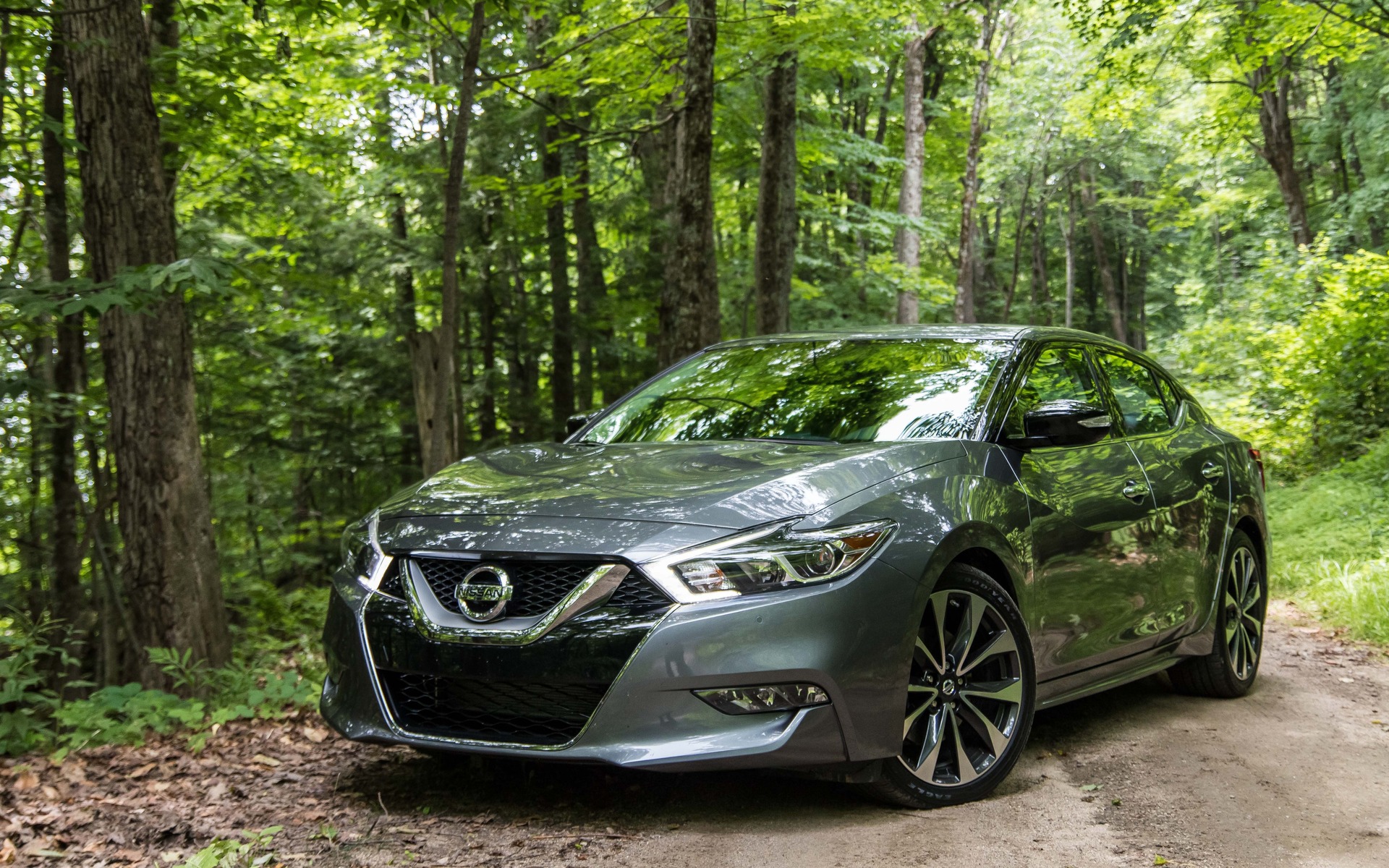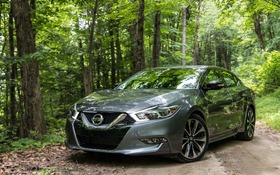2016 Nissan Maxima: It’s Not A Four-Door Sports Car, It’s A Sporty Four-Door

| Strong points |
|
|---|---|
| Weak points |
|
Ever since Nissan released the third-gen Maxima in 1988, they’ve been boasting about their four-door sports car. They even created a special name for it: the 4DSC (4 Door Sports Car). In the years that followed, the Japanese automaker tried to convince buyers that its full-size sedan was actually a feisty sports car by pitting it against recognized German vehicles (who shall remain nameless) on the track. The 2003 Maxima even had the audacity of borrowing its style from the 350Z coupe in a bid to look more athletic.
Now it’s more of the same, with Nissan pitching the new Maxima as the perfect car for drivers who’d rather be driving a sports car, but need an extra pair of doors. But is it really the best car for the job?
The job description
The 2016 Maxima is instantly recognizable. Not only as a Nissan product (with the chrome grille that dips into a V in the middle, the boomerang-shaped front and tail lights, and a style that’s heavily based on the Nissan Sport Sedan Concept), but also as the brand’s top sedan. In particular, its signature look is largely thanks to the black C pillar, which makes the roof look like it’s floating, much like on the Murano. Style is always a matter of taste, but this sedan’s looks certainly won me over. I might even go so far as to call it . . . sporty.
The same goes for the interior. The cabin is very dynamic and the quality of the materials blew me away. According to Nissan, the Maxima’s stylists drew inspiration from fighter jets when designing the vehicle’s cockpit, which is why the various controls are angled toward the driver.
On all trims, you’ll find contrasting stitching on the seat leather, a heated steering wheel and seats, and satellite navigation displayed on an eight-inch screen. And they all come with Zero Gravity seats that contain high-density foam and were designed using NASA research findings on perfect neutral posture. The final result is very impressive and makes the Maxima look like it’s a much more expensive car.
Multiple personalities
The Maxima attracts two types of buyers. Those who look forward to making the most of the sedan’s sport aptitudes will choose the top-of-the-line SR trim. This version comes with a sport suspension, wheel-mounted paddles for changing gears and unique 19-inch wheels. Add to that an extra electronic module that improves the big vehicle’s handling by applying the brakes on opposite corners. If the driver turns to the right, the front right and rear left brakes are squeezed.
With this trim, the driver can draw the most out of the 300-horsepower 3.5-litre V6, which relays power to the front wheels by way of a continually variable transmission (the only one available, as the Maxima lost its manual gearbox seven years ago). On paper, this drivetrain may not seem terribly sporty, but Nissan’s engineers did great work in designing this car. It’s easy to manoeuvre, its steering is extremely communicative (despite the fact that it’s a hydro-electric unit), and I was pleasantly surprised by the CVT’s work on winding roads. It transmits power in a linear (i.e. normal) fashion, but it can also simulate gears on demand.
The second type of Maxima customer is looking for luxury and thus will naturally turn to the Platinum, which also sits at the top of the line. This version emphasizes the Maxima’s outstanding soundproofing, comfortable seats and the suspension’s ability to absorb all the bumps and ruts in the road without bothering the vehicle’s passengers. The Platinum also comes with a glass panoramic roof, a comprehensive camera system covering the vehicle’s entire perimeter, even higher quality leathers throughout the interior, a power sunroof and a long list of other accessories.
Living in the Infiniti’s shadow
The Maxima finds itself in a precarious position. Its size puts it right above the Altima, but the price of the better equipped versions are inching very close to the Japanese manufacturer’s other luxury sedan, the Infiniti Q50. (The baseline Maxima starts at $35,900, the SR costs $41,100 and the Platinum sells for $43,300.)
This forces Nissan to emphasize the Maxima’s individual attributes to attract buyers—and that’s a good thing. The car’s equipment list is very generous for the price, its ride is sufficiently responsible to be considered sporty, and the vehicle still manages to be comfortable enough for longer trips. As a bonus, it’s good on gas, using just 7.8 L/100 km on the highway.
Is the Nissan Maxima the queen of the four-door sports cars? No, but it’s definitely one of the best full-size sedans to offer a sporty ride.











